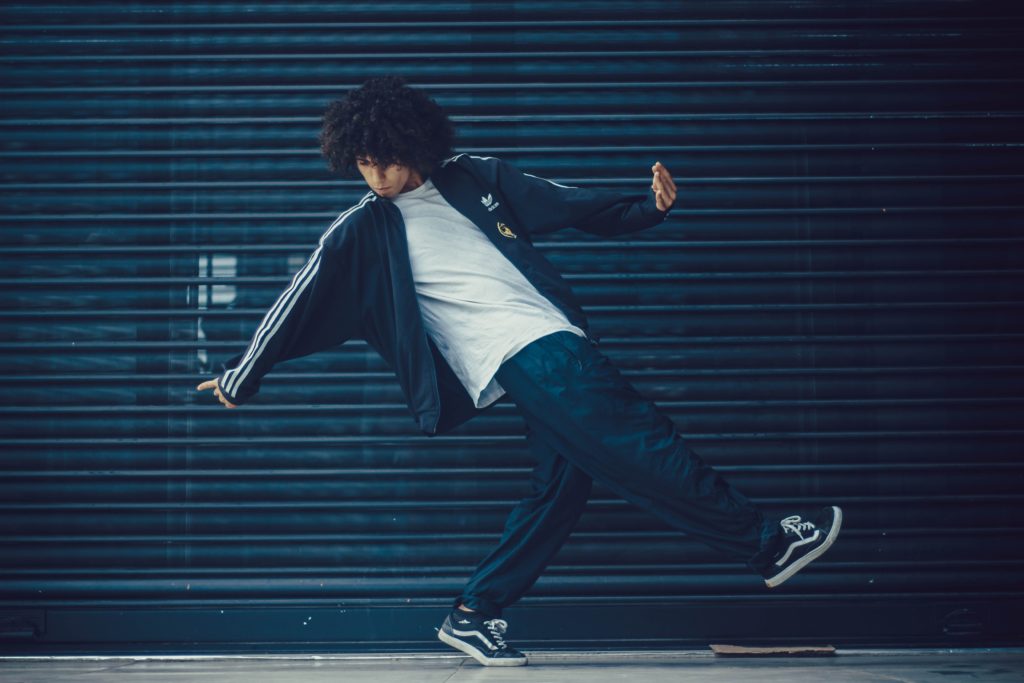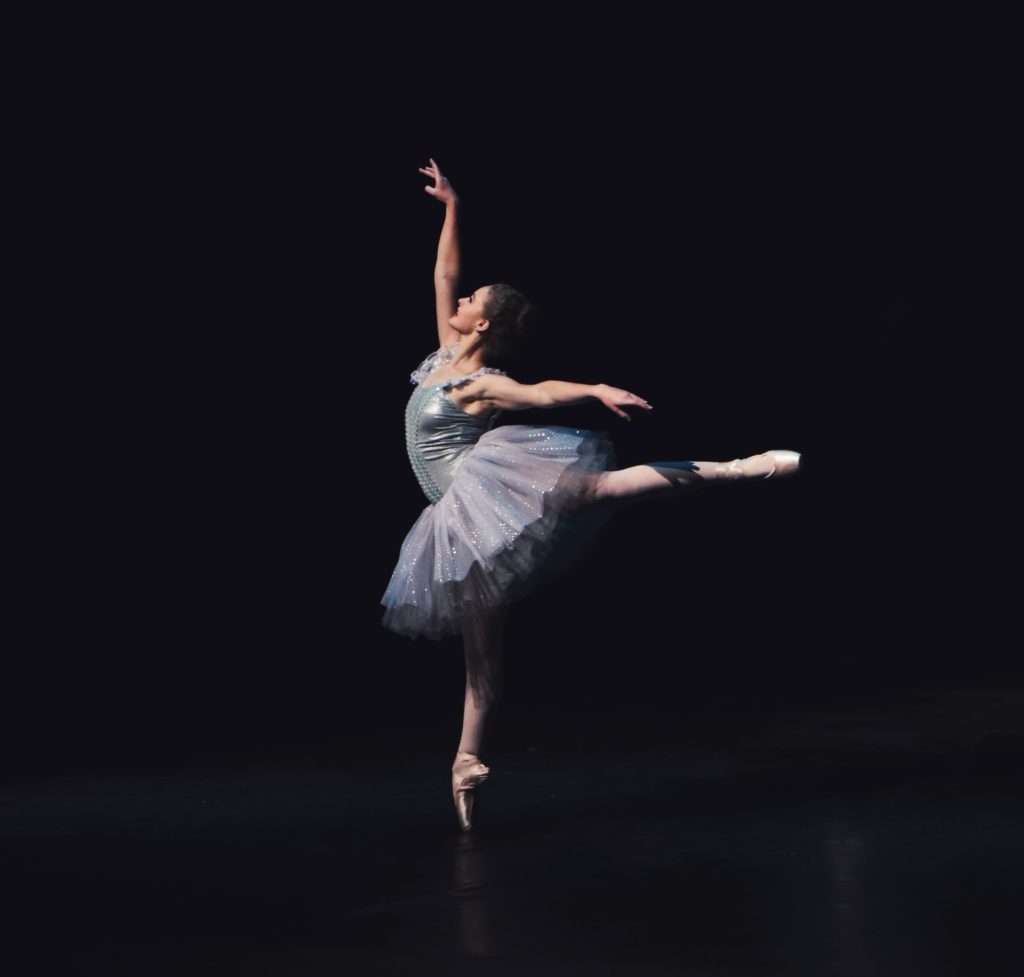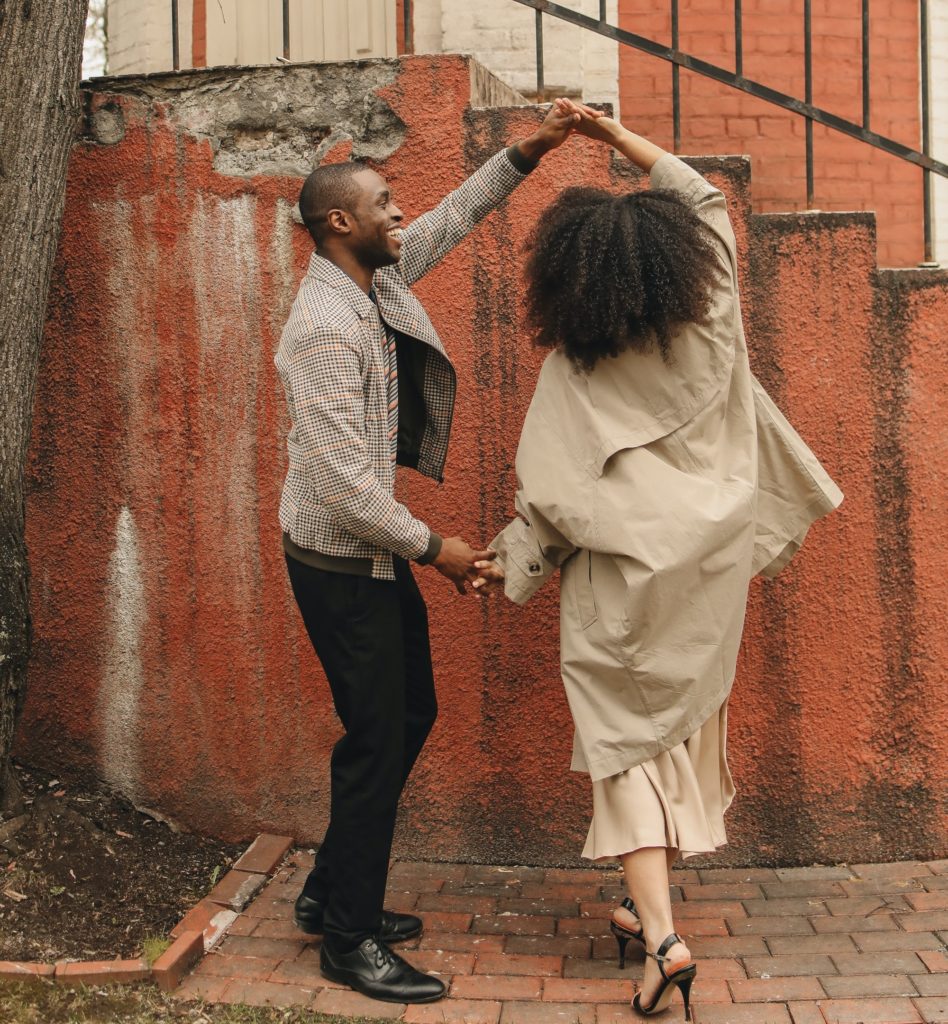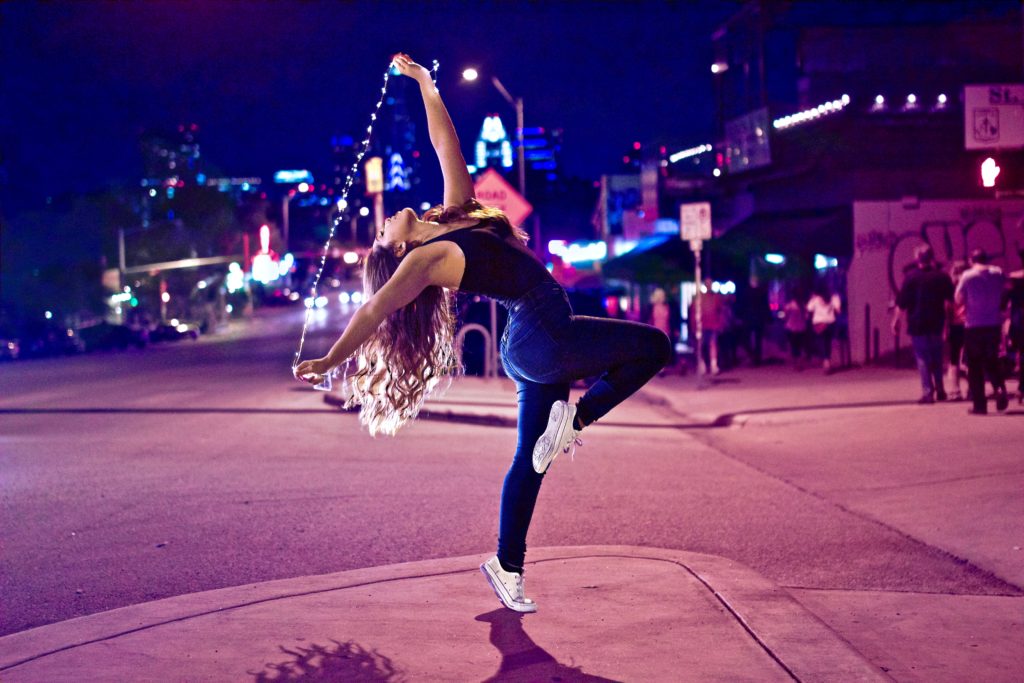Many people are faced with a buffet of dance options at some point in their lives. The question of ‘what is the best style of dance’ is often asked.
This is a valid question.
There are several key aspects that can be taken into account to find which is the best style of dance for you.
The key considerations in determining the best style of dance for an individual include:
- Experience
- Motivation
- Personal dance preferences
- Dance budget
- Dance capability including any existing injuries
- Age
- And arguably gender.
Our Principle Author, Jake, has gained much experience as to the differences between dance styles. He has performed in numerous settings, completed formal competitions, and also danced socially for enjoyment. Because of this, he understands what some people might enjoy and others may not. His dance experience includes:
- Hip Hop (including popping and locking)
- Ballet
- Tap
- Jazz
- Ballroom (including Waltz, Samba, Cha-Cha, Foxtrot, Quickstep, Jive, Tango, Rumba)
- Latin social dance (including Salsa, Bachata, Zouk, Kizomba)
- Reggaeton and Street Reggaeton
Read on for valuable insights gained from real experience. Use this knowledge as a genuine shortcut to identifying what is the best style of dance for you.
Identify what is your motivation to dance:
Despite what you think, there can be many motivations to dance. It is often not as simple as ‘I just enjoy dancing’.
Let me explain. When you are an experienced dancer you learn to see the differences in the type of people who dance. These differences become apparent in something such as competition Ballroom versus something such as social Salsa dancing.
For example, Ballroom is notorious for being quite intense, expensive, technical, and arguably has a high stress to reward ratio.
Social Salsa dancing on the other hand is characterized by a range of people from teenagers to the elderly with a range of dance abilities.
So as you can imagine, there are many different factors at play in the umbrella of motivation. These can include:
A sense of belonging:
The social aspect of dancing cannot be underestimated, after all, who likes to dance alone for long periods of time. Included in this social aspect is:
- The type of people in a dance class
- What age others are
- Gender balance
- How inclusive others are, etc.
Validation:
Having your dance ability validated either through awards or grades.
Some people are very goal-oriented. Meaning that unless they receive something at the end of their task, they don’t feel satisfied. Others are insecure and need validation.
Some people are just not aware that they are seeking formal validation through medals and awards, etc.
Performing:
Some people are more motivated to perform than others and really come alive under the spotlight. They find their dance experience is enhanced through a stage. Others shy away from the pressure of such scenarios and find the pressure takes away from the dance itself. These are personal preferences.
Romance:
Finding a romantic partner. This is a significant one for many people. Many couples have met through dancing, then quit dancing after they have met each other.
Events:
The number of events (either social or competitive) that a dance type may offer. Some dance schools/classes are more active in this arena than others.
Dance movement preference:
What sort of dance movement inspires you as a dancer. The different dance movements between say Ballet and Hip Hop are significant.
Cost:
The cost of dancing. Some dances are expensive to do, such as Ballroom dancing. Whilst others are much cheaper such as social dancing. For many people, this is a motivating factor.
Skill bias:
How good you are at the dance. Some people may not realize that the only reason they enjoy a dance is that they were initially good at it. They may do themselves a disservice by not exploring other dances which they might have enjoyed more.
The importance of motivation identification:
Knowing what your motivation to dance is will assist you in identifying what exactly you are looking for in a dance style.
For example, if you are looking for a romantic partner social dancing might be your best bet. Or if you are looking to perform on a stage, then competitive dancing will be your best bet, etc.
Know that different dances have different physical/financial/social characteristics:
It is a tremendous shame that many people may try one style of dance and not enjoy it. They then tell themselves that dancing as a whole is not for them.
They forget that the differences between dance types are significant. These dance differences can include factors such as cost, types of movement, and potential for injuries.
So what are the characteristics that go with different dance styles? Many websites will give you generic information on dance style differences. But few will actually inform you of what it is really like firsthand.
Outlined below are details on what you will most likely experience with each style gained through firsthand experience.
Also included are ‘common themes’ of the dance styles. These are the very real differences of why some people may select, or not select a dance style. So if you don’t wish to read the entire section below, skip to the common themes of each. It should be of significant assistance.
Hip Hop:

Cost:
Hip hop is generally not expensive. In Australia, you can expect to pay around $20 AU for one casual class. You will pay less for a term pass (per class).
Types of movement:
Hip hop is generally characterized by sudden, sharp, controlled movements. Have a look at this Hip Hop video of the skilled ‘Itslavik’ to see what this looks like:
Age mix:
Hip hop can be a young crowd (13-18). In larger cities, the age bracket can go up (30-45) as the pool of minorities goes up. It can be difficult beyond these ages due to the sharp nature of the dance, but there are exceptions.
Gender mix:
Hip hop has a mix of genders. It tends to be more inclusive of males due to its aggressive and gritty nature.
Injury risk:
Injury risk for Hip Hop is average. It can be hard on the knees and feet if you are doing a knee-intensive routine. Due to the aggressive isolation movements, you can aggravate your feet, hips, and neck if you are too aggressive.
Music:
The types of music that Hip Hop classes will play is often aggressive, fast, and gritty. This can be seen in the above video. The reason for this is that Hip Hop moves become more technical when the music is more intense. Thus the moves are more difficult and the class is more teachable.
Common themes:
As mentioned above, Hip Hop classes are generally aggressive, fast, and gritty. This can be an issue if you prefer the wider Hip Hop genre which includes slower more gentle songs and movements.
Ballet:

Cost:
Cost will depend on how serious you are about Ballet, noting that many people want to become professional Ballet dancers. However, you can expect to pay around $20 AU for one casual class, less for a term pass.
You will also need to factor in the cost for Ballet shoes ($35 to $150 AU) at a minimum. Ballet has specific requirements for these. Note that many serious Ballet dancers have multiple shoes as the shoes themselves wear out quite quickly. Expect to pay the higher price range for pointe shoes. For an in-depth guide to Ballet shoes have a read of the article A Complete Dance Shoe Guide: The what, how, and when.
Types of movement:
Ballet is characterized by elegant lines of the body including leg/feet, torso, arms, and head. The goal of Ballet is to gain such mastery of the body that difficult movements are seemingly performed effortlessly. Distinguishing movements of Ballet are graceful yet explosive jumps and landing on the balls of the feet.
Age mix:
In the non-professional Ballet scene, the age range is usually young (up to 16-18 years). Beyond this age, it is common for adults to find a good teacher, as good teachers are usually professionals. However that being said good adult classes are out there, it’s just a matter of finding them.
Gender mix:
It is no secret that Ballet is dominated by women. However, men do hold a special place in Ballet due to their:
- Ability to provide partnering with lifts
- Provide a balance to a story that is being told
- And their explosive masculine movement.
If you watch the below video of a famous solo by renowned Ukrainian Sergie Polununin you can see this explosiveness:
Injury risk:
Ballet is notorious for being hard on dancers’ bodies, particularly their feet and knees. The reason for this is that dancers are frequently jumping and landing on hard surfaces. They use the balls of their feet with little cushioning from Ballet shoes. This can be quite taxing on ligaments, tendons, and bones especially given the complexity of feet anatomy.
For women in Ballet, the injury risk rises due to the stress that Ballet pointe shoes place on their feet. Ballet dancers are also operating at extreme levels of flexibility. This can mean their skeletal system is placed under more range of movement and with greater leverage of tendons. This can result in a higher chance of injury.
Music:
Ballet is a classical genre. This means it is generally danced to classical music. An example would be Tchaikovsky – Nutcracker Suite or Orchestra Sinfonica Moldava Silvano Frontalini – Roméo et Juliette. Often professional Ballet dancers will practice to a single live classical piano player. However, as seen in the above-linked video of Polununin, it can be danced to more modern songs.
Common themes:
Ballet can be both a graceful and explosive dance. It is often dominated by women. Unfortunately, the road can be tough for straight men given Ballet is generally considered reasonably feminine.
But don’t let that stop if you are a man! If you watch strong male dancers such as Rudolf Nureyev or Mikhail Baryshnikov they are incredibly athletic and warrior-like. The Ballet community itself is very welcoming of male dancers.
On another note, the common reason why people stop dancing is:
- The lack of adult classes
- Lack of quality teachers who are not in the professional scene
- And injuries.
If you do Ballet it can form a strong foundation for other dances. The reason is it gives you a solid understanding and skill in technique, posture, and strength.
Ballroom: Quickstep, Waltz, Jive, Samba, Cha Cha, Foxtrot, Tango:

Cost:
Ballroom can be expensive. The reason for this is that Ballroom lends itself to competitive dancing, more so than other dances.
When dance becomes competitive the opportunity for specialist coaching becomes more common. Specialist coaching is expensive- approximately $100 AU p/hr for a good coach.
Competition also brings with it expenses such as:
- Costumes (many women’s Ballroom costumes can retail at $500-1000 AU, whilst men’s Ballroom suits can retail at $500 AU).
- Traveling to and from competitions
- Accommodation costs
- Costs to enter the competition
- Food and drink at the competition
- And time off work.
Types of movement:
Ballroom can be generally characterized by technically sharp, graceful, controlled movements. There is a requirement for a high degree of balance and cohesion between the two partners. Given the closeness of the partners in the dance there is little room for error.
Take a look at the below video of the infamous Blackpool dance competition in Britain. This is one of the original Ballroom dance competitions in the world and will give you an insight into the Ballroom dancing scene:
Age mix:
Ballroom attracts a large mix of ages. The slower more graceful dances such as Waltz tend to attract an older generation. Whilst the more explosive dances such as Samba tend to attract a younger generation.
Gender mix:
Ballroom has a balanced gender mix. The reason is both a man and a woman are generally required to perform the dance.
Injury risk:
Ballroom does pose an injury risk, particularly in the feet, knees, back, and neck regions.
The feet:
The reason for this is that footwear in Ballroom is not particularly conducive to injury-free feet. For men, the footwear is designed to be quite tight on the feet which constrict toe joints. For women, the footwear is heels which places pressure on the toes and balls of feet and ankles.
The knees:
A significant portion of the dance requires the dancer to have bent knees. Over time this can take a toll on dancers’ knees. Take a look at the Blackpool video linked above for an example of bent knees.
The back and neck:
Anecdotally women seem to have more back and neck issues than men. This is due to the position that they must carry themselves when doing many of the dances in Ballroom. View the Blackpool video above, and you will see women in this pose for long periods in the dance.
Collision risk in competition:
It is not widely known but collisions between couples do occur on the dancefloor in competitions. This is particularly dangerous for the women when their heads and necks are arched away from their partners. This leaves them vulnerable to the elbows and heads of other twirling couples.
Music:
Ballroom music tends to be somewhat old-fashioned, as the dances themselves are historic. Much of the music has 1920’s jazz and orchestral notes as seen in the above video. This is particularly noticeable in competitions, where it is rare for the music to become more modern.
Common themes:
Glitz, glamour, makeup! There is also an emphasis on technical accuracy of moves. This accuracy can then flow onto a certain level of stress between partners. Not to mention the stress from competition pressure.
The costumes can be high maintenance and expensive. The training itself can be expensive especially if you are doing private classes (generally required if you are competing).
However, if everything comes together, it is quite magical and rewarding. A key contributor to your sense of well-being and happiness with ballroom will be your partner and your teacher, so choose wisely friends.
Latin social: Salsa, Bachata, Zouk, Kizomba:

Cost:
Latin social dance can be cheap or costly depending on how invested you are in training. However, in general, the cost is $20 AU for a class or social dance entry.
Types of movement:
Latin social dance tends to be not as strict or technical as Ballroom is. It tends to be more gentle and has more flow as opposed to the sharp movements of Ballroom dances. It also has greater room for improvisation and error.
Age mix:
Latin social dance has a large range of age groups, from teenagers to people in their 60’s.
Gender mix:
Latin social dance has a balanced gender mix due to the nature of partner dancing.
Injury risk:
Latin social dance poses a minimal injury risk due to the gentle flow nature of the dances and casual footwear. However, women sometimes wear Latin heels which can impinge on toe joints and place pressure on the balls of the feet. But other women will not. I personally have seen fantastic Columbia women dance wearing workboots.
Music:
There are significant differences in music between the different Latin social dances. For example, Salsa vs Bachata, however, they are difficult to describe. Listed below are classic examples of the differences between the genres:
Salsa song example: Marc Anthony – Vivir Mi Vida.
Bachata song example: Romeo Santos – Tuyo (Audio)
Zouk song example: Abege feat. Kaysha – I like it – YourZoukTv – clip officiel
Kizomba song example: Nelson Freitas – Rebound chick
You might have noticed the beat in Bachata is quite different from that of Salsa. Some people enjoy it, others don’t.
Common themes:
Common themes in Latin social dance include that the dancefloor can be quite busy and crowded. Latin social dance tends to operate in closer quarters with shorter steps than Ballroom.
It has to be said, unfortunately, unpleasant body odors are a common issue with partner dancing in general. And given the close quarters and density of crowd in Latin social dancing, it is particularly rife.
Another theme to note is that there are a variety of people in Latin social dancing. So, to be frank, it is not uncommon if you go from dancing with an attractive person that smells nice to a not-so-attractive person who has poor body odor. Some people don’t mind this, others do. This is all part of the scene.
Reggaeton/Street Reggaeton:

Cost:
Reggaeton has an average cost of $20 AU per casual class and is lower if you purchase a term pass.
Types of movement:
Reggaeton has the stereotype of a twerking and sexual dance. For this reason, it is helpful (for both men and women) if you have some mass on your glutes. Women usually have the advantage here.
Age mix:
Reggaeton tends to attract age ranges around 18-35. The reason for this is the somewhat promiscuous nature of the dance, and age ranges outside of the above tend not to engage in such natures as much. There are of course exceptions.
Gender mix:
Reggaeton is dominated by women as many of the movements taught in classes are focused on hip manipulation and control. This often translates often to ‘booty shaking’. I firmly believe men can also dance Reggaeton, but in a more masculine way. Unfortunately, there are few men who are leading the way in this respect for Reggaeton.
Injury risk:
There is not a significant injury risk with Reggaeton. However, common injury sites include lower backs and knees as there are many twerking/hip thrust/sudden drops to the floor.
Music:
Reggaeton music is very danceable, it is characterized by the beat called ‘dembow’. If you listen to any reggaeton song such as Maluma – Corazón (Official Video) ft. Nego do Borel you will hear this beat.
Common themes:
As mentioned above, most reggaeton classes have twerking/booty shaking movements. This can make it difficult for straight men to participate, but not impossible. Take a look at 0.53 of the below video. This shows what masculine Reggaeton can look like.
An inexperienced female dancer might think that to dance well is to be able to booty shake/twerk. This is not correct and they may do themselves a disservice by over-sexualizing dancing. Then when they dance in public they may attract the wrong type of guy who only wants something physical. It is something for women who are just beginning to dance to keep in mind.
The importance of freestyle dance:
This is a part that few people seem to acknowledge or are even aware of. It is important to know what sort of movement and music you NATURALLY prefer. This preference is best formed WITHOUT pressure from a peer group or class structure. Freestyle practice done in private generates such preferences.
A comprehensive step-by-step article on how to gain this invaluable freestyle experience can be viewed here: How To Become A Good Dancer: The complete guide people need.
But why is natural dance preference important? It is important because not all dance styles/classes are the same. Start with knowing what your natural dance preference is. Then it will be easier to know what style of dance class you will enjoy.
Many people follow this process:
- They may want to dance
- They pick a dance group or class because they have heard about it from a friend
- Become heavily involved in it becuase they are ‘goal oriented’ and are blinded by the glitz and glamour
- Become burnt out after a few years
- They are confused as to why they became so involved with it.
In the end, such people probably dance for the wrong reasons. They probably also fail to realize their natural dance preference. Natural dance preference is not a temporary thing, it is part of your identity.
So, it is important to know that some dances are significantly more suited to your natural type of:
- Movement
- Body type
- And music preference.
How to find the best style of dance?
So, in closing, when you go to a dance class two great questions to ask yourself is:
- Would this music that is being played motivate me to dance if I was dancing by myself at home?
- Would I do this type of movement organically/naturally if I was by dancing by myself at home?
If the answer is ‘no’ to either of the above questions, you may benefit from trying other types of dances.
If the answer is ‘I don’t know’ to either of the above questions, you may benefit from learning what you prefer naturally without any pressure from external sources. You will then have a great foundation for knowing what is the best style of dance for you.

